Well, I do know that there are no permits required for the impost of dead insects in the US. I've seen this information on the USDA websitekevinkk wrote: ↑Sat Mar 16, 2024 3:18 pm It may be safe, but it's not legal to send insect material of any sort through the mail without a permit, especially from overseas. That includes sending
material to other countries from the USA. I've already had that argument at the post office.
I've thought that using the mail would be a good option while out of the USA, but it's still smuggling.
The few exceptions are papered natives, or non-native deadstock already here, or the few native ubiquitous
species as living material.
-
nikiahloch

- Posts: 7
- Joined: Sat Mar 16, 2024 12:53 am
Re: Collecting in Vietnam
by nikiahloch » Mon Apr 22, 2024 1:45 am
-
nikiahloch

- Posts: 7
- Joined: Sat Mar 16, 2024 12:53 am
Re: Collecting in Vietnam
by nikiahloch » Mon Apr 22, 2024 1:44 am
I know export from Vietnam isn't banned. I purchase insects from private dealers all the time over there and they always show upCassidinae wrote: ↑Sat Mar 16, 2024 7:26 pmOfficially, the export of insects from Vietnam is banned.nikiahloch wrote: ↑Sat Mar 16, 2024 12:55 am is it safe to just send the speciems I collect back to the U.S in the mail? Instead of going through the hassle of bringing them in luggage and dealing with customs
-edited by admin- "Be careful with what you write on a public forum".
-
lamprima2
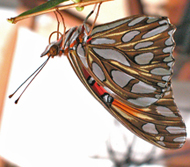
- Premium Member - 2024

- Posts: 94
- Joined: Mon May 23, 2022 8:16 pm
-
Trehopr1
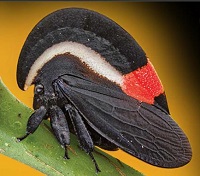
- Global Moderators

- Posts: 1007
- Joined: Thu Mar 31, 2022 1:48 am
Re: Moths of North America (MONA) Catocala
by Trehopr1 » Sun Apr 21, 2024 8:13 pm
When you think about it having multiple authors part of such a project is a conundrum to begin with. Everyone has different schedules, family issues, work responsibilities etc. For each individual it would be much like allowing "only hobby time" for it.
As an individual author it would require the borrowing of specimens, the viewing of specimens if you cannot borrow, all sorts of past literature by previous authors, and modern colleagues with a similar strong knowledge who could serve as sounding boards of opinion.
None of this is easily done. There is a lot of mistrust out there from many different angles. Also, I think it would take one's unfettered and concentrated effort to bring it all together in a sensible time frame.
Perhaps NOT PERFECT in everyone's eyes but, at least further enough along to say I've gotten this far and at this point "things make a little more sense now" and someone else can take up the baton from here someday.....
Just my thoughts.
-
whatisthis

- Posts: 4
- Joined: Sun Dec 17, 2023 5:33 pm
Re: Can anyone identify these insects?
by whatisthis » Sun Apr 21, 2024 6:09 pm
That's perfect, thanks very much for sharing your knowledge.livingplanet3 wrote: ↑Sun Apr 21, 2024 5:53 pmThey are insects in the order Psocodea -whatisthis wrote: ↑Sun Apr 21, 2024 4:35 pm Hi All,
Found these insects in the wood pile (ash) and am curious to know what they are; they don't look much like a wood-boring insect but perhaps they are? They seem to look almost like an ant...
There are 2 types that have appeared in abundance; some have wings and some don't; are these perhaps a male and female or 2 entirely different insects?
Thanks in advance.
https://en.wikipedia.org/wiki/Psocoptera
The example in your 1st photo may possibly be in the genus Amphigerontia -
https://bugguide.net/node/view/149401
-
livingplanet3
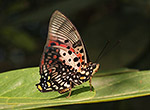
- Premium Member - 2024

- Posts: 595
- Joined: Tue May 24, 2022 4:55 pm
Re: Can anyone identify these insects?
by livingplanet3 » Sun Apr 21, 2024 5:53 pm
They are insects in the order Psocodea -whatisthis wrote: ↑Sun Apr 21, 2024 4:35 pm Hi All,
Found these insects in the wood pile (ash) and am curious to know what they are; they don't look much like a wood-boring insect but perhaps they are? They seem to look almost like an ant...
There are 2 types that have appeared in abundance; some have wings and some don't; are these perhaps a male and female or 2 entirely different insects?
Thanks in advance.
https://en.wikipedia.org/wiki/Psocoptera
The example in your 1st photo may possibly be in the genus Amphigerontia -
https://bugguide.net/node/view/149401
-
Trehopr1

- Global Moderators

- Posts: 1007
- Joined: Thu Mar 31, 2022 1:48 am
Re: A parade of Catocala moths
by Trehopr1 » Sun Apr 21, 2024 5:49 pm
found in our upper northeast region of the US.
Some western records exist as well and are
associated mostly with the Rocky mountains
and nearby ranges.
The Ribbed or Briseis underwing (Catocala briseis)
is a very nice boldly marked/patterned species.
This particular specimen hails from Michigan and
was acquired from an old collection. I have never
encountered it here in northern Illinois and I'm
unaware of any collector friends having found it
here.

-
whatisthis

- Posts: 4
- Joined: Sun Dec 17, 2023 5:33 pm
Can anyone identify these insects?
by whatisthis » Sun Apr 21, 2024 4:35 pm
Found these insects in the wood pile (ash) and am curious to know what they are; they don't look much like a wood-boring insect but perhaps they are? They seem to look almost like an ant...
There are 2 types that have appeared in abundance; some have wings and some don't; are these perhaps a male and female or 2 entirely different insects?
Thanks in advance.
- Attachments
-
- Bug 2.jpg (106.34 KiB) Viewed 55 times
-
- Bug 1.jpg (131.53 KiB) Viewed 55 times
-
58chevy
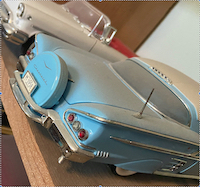
- Posts: 382
- Joined: Mon May 23, 2022 5:58 pm
Re: Moths of North America (MONA) Catocala
by 58chevy » Sun Apr 21, 2024 3:23 pm
-
kevinkk
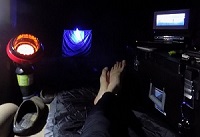
- Premium Member - 2024

- Posts: 326
- Joined: Mon May 23, 2022 5:06 pm
Re: Moths of North America (MONA) Catocala
by kevinkk » Sun Apr 21, 2024 3:15 pm
-
Paul K

- Posts: 184
- Joined: Mon May 23, 2022 6:44 pm
Re: Anthocharis sara, stella, julia
by Paul K » Sat Apr 20, 2024 7:50 pm
Does anyone know reliable location for Anthocharis julia sulphuris ?
-
livingplanet3

- Premium Member - 2024

- Posts: 595
- Joined: Tue May 24, 2022 4:55 pm
-
vabrou

- Posts: 94
- Joined: Mon May 23, 2022 11:22 am
Re: Moths of North America (MONA) Catocala
by vabrou » Sat Apr 20, 2024 4:18 pm
The general public is totally unaware that the first MONA fascicle (N.A. Sphingidae) left out 8 different species known at that time captured in the USA. And that didn't include the several handfuls of taxonomical errors and misidentifications that were also published. Also, there are hundreds if not thousands of errors in all of these half century of MONA fascicles, all of these kept a complete secret by the governing board of MONA (past and present). I have some of these secret lists of errors in MONA. All of the entomologists who were instrumental in starting MONA are no longer with the living.
Keep in mind, no one person can be an all-knowing expert for even a single state, much less for worldwide knowledge as there are hundreds to thousands of now documented new invasive species from throughout the world into N.A.. I know as I have published about dozens of these lepidoptera species. Every person makes mistakes, the only persons who do not make mistakes are those that do not do anything.
If one wants to discover new species, start collecting microlepidoptera. There are probably 500-1000 undescribed new species right outside your home at this moment.
Photo for attention: Petunia the bull, and Nancy the cow. My entire vast heard of cattle, numbering as many as (2).
- Attachments
-
- 892473_365694883549257_359948162_o.jpg (232.27 KiB) Viewed 223 times
-
wollastoni

- Site Admin

- Posts: 463
- Joined: Fri Mar 18, 2022 9:51 am
Re: Agrias butterflies
by wollastoni » Sat Apr 20, 2024 2:51 pm
There are less variations in female aurantiaca : https://agrias-butterflies.com/agrias-p ... urantiaca/
-
kevinkk

- Premium Member - 2024

- Posts: 326
- Joined: Mon May 23, 2022 5:06 pm
Re: Global travel collecting
by kevinkk » Sat Apr 20, 2024 2:46 pm
Easy. After a week in Naples, I was told by my sister's husband I was speaking better than people who had been at the base for more than a year.
It's a sign of respect. Without a "smartphone".
Same with access, private property is that way for a reason.
-
Trehopr1

- Global Moderators

- Posts: 1007
- Joined: Thu Mar 31, 2022 1:48 am
Re: Papilio rutulus
by Trehopr1 » Sat Apr 20, 2024 8:45 am
Very nicely done on the spreading !
-
lamprima2

- Premium Member - 2024

- Posts: 94
- Joined: Mon May 23, 2022 8:16 pm
Papilio rutulus
by lamprima2 » Sat Apr 20, 2024 4:34 am
- Attachments
-
- DSC_6221 IN.jpg (564.29 KiB) Viewed 178 times
-
Panacanthus

- Premium Member - 2024

- Posts: 115
- Joined: Tue May 31, 2022 7:51 pm
Re: Chien Lee
by Panacanthus » Sat Apr 20, 2024 12:14 am
-
Trehopr1

- Global Moderators

- Posts: 1007
- Joined: Thu Mar 31, 2022 1:48 am
Re: A parade of Catocala moths
by Trehopr1 » Fri Apr 19, 2024 6:00 pm
I zoomed in on the lower specimens forewing "wing pattern" and I can see many points where certain markings, line squiggles, blank cells are all pretty much in the same place except that it is a VERY melanic appearing individual.
It could be that perhaps it's diet as a larvae was on something a bit different for the species or the nutrient contents were richer thus producing this dark one.
Marvelously different for the species.
I imagine that trying to put together a Mona fascicle on these moths (just for the eastern half of the US) could prove to be very daunting for anyone because of variations within species, notable forms, and even possible hybridization of some species.
A tough subject indeed....
-
Chuck

- Premium Member - 2024

- Posts: 915
- Joined: Mon May 23, 2022 2:30 pm
Re: Anisota virginiensis
by Chuck » Fri Apr 19, 2024 5:32 pm
